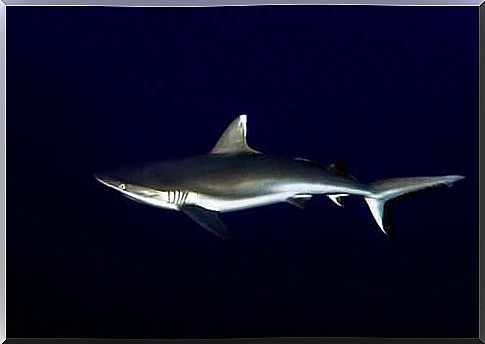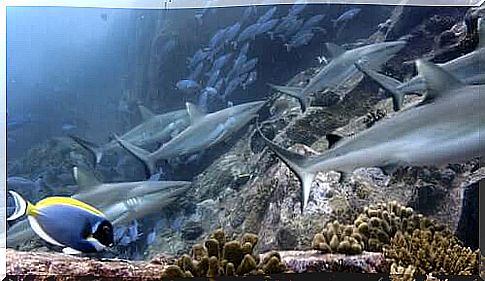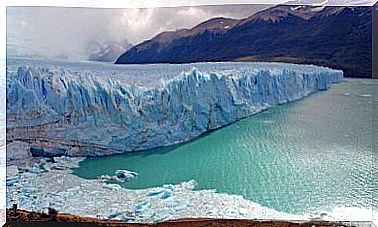Gray Shark: Characteristics And Habitat

The gray shark, also known as the reef shark, is a medium-sized species that lives mostly in the warm waters of the Pacific Ocean. Its white colored dorsal fin is one of its distinguishing features, as are the white tips we see in almost all of its fins.
Furthermore, this beautiful aquatic animal is distinguished by its very well developed sense of smell which makes it a powerful hunter. Below we present the main characteristics, habitat and lifestyle of the gray shark.
Gray shark: taxonomy and physical characteristics
Sharks belong to a superorder of the animal kingdom called Selachimorpha. In it we find several species of cartilaginous fish (chondrichthyes) which are very large and which generally represent the greatest predators of their habitats.
To date, more than 300 species of sharks have been identified and classified in the seas and oceans of our planet. One of the most interesting species is the gray shark, together with the well-known white shark.
The gray shark belongs to the order Carcharhiniformes , which includes the largest number of known shark species. In this order, the gray shark appears as a medium-sized and relatively harmless species.
The body of this animal has an average length of 2.5 meters and a weight that is around 25 kilos; some male specimens in adulthood, however, can reach 2.55 meters and even 30 kilos. In its territory, however, the gray shark appears as one of the largest and most powerful species.
As its name suggests, this animal has an almost entirely gray body, although the underside is white. It has a similar appearance to the black tip shark, but the latter, as its name indicates, has the first black dorsal fin.

Gray sharks have white dorsal fins, with darker edges. Their caudal fins also allow them to be distinguished from other species, thanks to their prominent black edge.
Natural habitat
Gray sharks are in optimal conditions for their development in warm, shallow waters. It is for this reason that they generally live near large coral reefs or atolls, especially in depths ranging from 200 to 800 meters.
Nowadays, this is the most abundant species of shark in the regions bathed by the Indian and Pacific Oceans. Its population is distributed across a large part of the Pacific Ocean, from the Red Sea to Easter Island.
Behavior of the gray shark
Although the term “shark” can be intimidating to many people, there are several species that can be harmless. The gray shark, for example, is surprising with its high degree of sociability.
In their natural habitat it is common to see these animals form large colonies in which they can live with over a hundred individuals. The largest shoals can be observed in regions with strong sea currents.
With some frequency, we can observe that the gray shark demonstrates its natural curiosity by exploring the environment in which it lives. These sharks have a habit of diving and swimming underwater in groups to explore their surroundings and entertain themselves. Although it is possible to come across them even in tourist coasts, cases of attacks on human beings are rare.
It is a very active species, and it is possible to observe its activity both day and night. Schools of gray sharks rely on a hierarchical social structure to ensure the survival of all individuals.

As for the longevity of this species, its life expectancy is about twenty-five years, an age that varies depending on the environmental conditions. As we can see, this is a long time for a marine animal.
Nutrition and hunting habits
The gray shark is a carnivorous fish, whose diet includes bony fish, squid, octopus, lobster, shrimp and crab. Their powerful sense of smell and their excellent swimming agility make these sharks excellent aquatic hunters.
In most cases, these sharks attack in groups the large schools of bony fish that are concentrated along the coral reefs. In some cases, however, it is also possible to see them chasing their prey alone.
Reproduction and conservation status of the gray shark
The gray shark is a viviparous type of animal. In other words, fertilized embryos develop inside the female body, from which their life cycle begins.
The mating period occurs twice a year, when males and females from the same colony or from different schools join together to copulate. After pregnancy, which typically lasts from 9 to 14 months, each female can give birth to between one and six puppies.
Unfortunately, the gray shark is one of the species classified as “near threatened” today. Commercial fishing for fishmeal and shark fin soup threatens the survival of this species.









